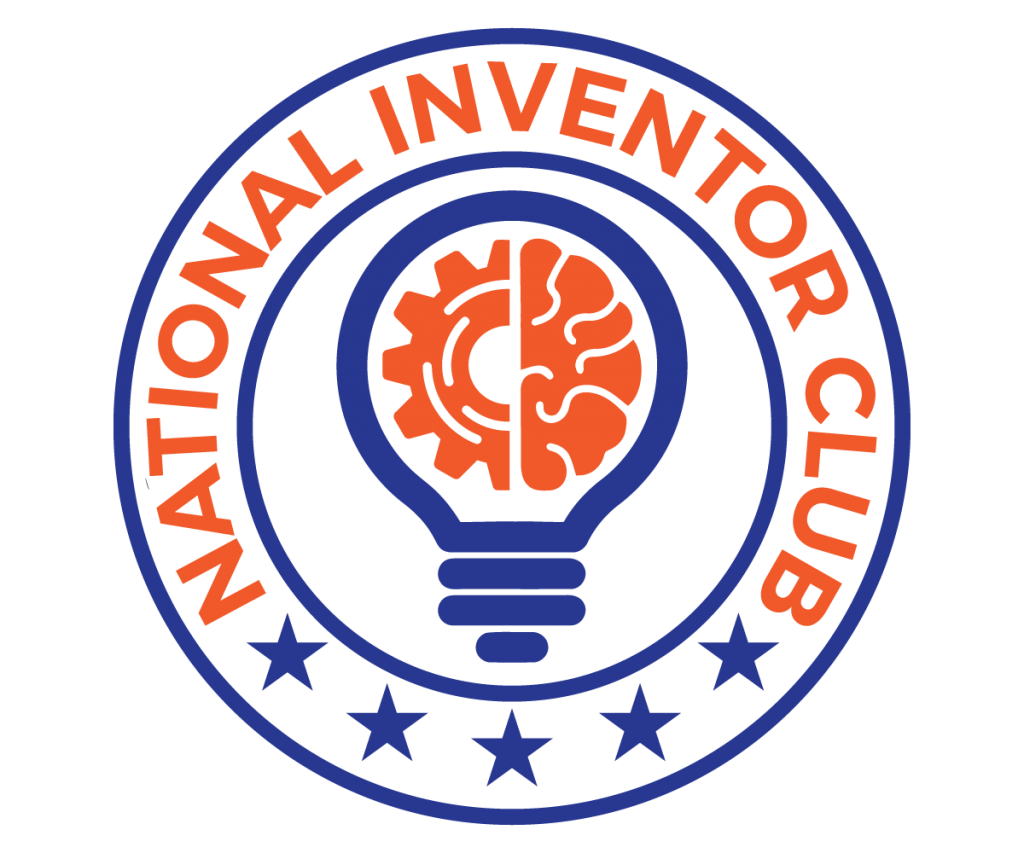
By Inventor Coach, Brian Fried
Every inventor has that moment: one minute, you’re struggling with a problem, and the next, you’ve come up with a great new solution for how to fix it. You can picture your product in your mind’s eye, and you know you need to make it a reality.
So, How Do You Take Your Invention Idea and Turn It into a Tangible Product?
Step 1: Come Up With An Invention Idea And DON’T LOSE IT
How Do You Know If You Have An Invention Idea?
An invention idea may present itself to you in the form of a way to improve an existing product (i.e., “building a better mouse trap”), or you may have an idea for an entirely new product category.
Your idea could be inspired by an existing product that’s been around for decades, but if you’ve found a way to solve a problem, then you just might have invented the best thing since sliced bread. Quick, write down your idea before something comes along to distract you!
Keep Track Of Your Invention Ideas
An invention idea is like a balloon in a child’s hand; it needs to be held tightly or it can easily float away.
If you’re an inventor, then you understand how a great idea can unexpectedly pop into your head without even a moment’s notice, and if you’re not careful, it can be forgotten just as quickly. Make sure you capture your ideas as soon as they come to you.
If you’re a serial inventor, you can organize your invention ideas in a journal, or create a folder on your computer where you can store your thoughts and revisit them later. Whatever your preferred method is, record your ideas in a safe place where you can easily find them when you’re ready.
Step 2: Make Sure Your Idea Is Really YOUR Idea
If capturing your idea is the most important step, researching your invention is the second most important. As an inventor, it’s your responsibility to make sure the products you’re inventing are, in fact, unique.
As you’ve probably guessed by now, you can easily start your research with everybody’s favorite search engine, Google. Search for terms related to your product, and take some time to dig through the results.
If you already have a product name in mind at this point, search for this, too. While Google may not be a foolproof method of seeing if your brand name is taken, it’s always good to know what type of content people will see when they search for your brand online.
As you come across your potential competitors’ products and companies, start jotting down their names, so you can look into whether or not these companies have any patents in place that could act as a roadblock for your own product. To do this, you can visit the United States Patent & Trademark Office’s website and run a patent search. If your idea hasn’t already been patented, consider this a green light, and keep going!
Step 3: Research Your Future Competitors
I can’t stress this enough: research, research, research! Make sure you’re familiar with all of your potential competitors’ products. Some key details you should research are:
- Competitors’ brand and product names.
This may seem like a no-brainer, but you’ll want to keep track of each and every one of the companies and products you’ll be competing with if and when you should take your idea to market.
Not only do you want to keep track of who your competitors are, but you also want to be careful not give your product a name that’s too similar to a competing product, as doing so is likely to confuse your customer.
- Price points of your competitors’ invention products.
Is there a wide range of prices among your different competitors, and are you able to offer a better product at a lower cost to the consumer? Alternatively, you can look into whether or not your target market would be willing to pay more than the competitors’ prices for a higher-quality product.
You’ll want to understand what your competitors’ prices are and how these prices are perceived by the market. If you’re researching a product category in which consumers seek a bargain, look into some ways you can offer your product for a lower price than your competitors’.
- Where your competitors’ products are being sold.
Are your competitors’ products available locally, nationwide, or internationally? Are they selling online only, or are they in brick-and-mortar locations as well? Which specific retailers carry your competitors’ products, and how does pricing vary from one store to the next?
Chances are, a retailer that carries your competitors’ products would be willing to carry yours as well. Make sure you keep organized notes on each of your competitors and where their products are being sold.
- What your competitors’ packaging looks like.
Does the packaging effectively tell consumers what the product is/ does? Are there any flaws in the competitors’ packaging, and if so, what are they?
Something as simple as packaging could make or break your product’s success. How many times have you picked up an item in a store only to put it back down again because you didn’t understand what it was for? This is why your packaging is so important.
When packaging is done correctly, it alone can influence a consumer’s decision to purchase.
If you can, take a trip to a store that sells your competitors’ product, and see how it looks in the aisle. Is the product easy to find? Does the packaging catch your eye? And when you’re examining the packaging, does it make you want to buy the product?
As you analyze your competitors’ packaging, you’ll be able to identify its strengths and weaknesses, which you can keep in mind for when the time comes to create your own product’s packaging.
- What are consumers saying about your competitors’ products? Does your invention idea align with the market’s feedback?
Start by asking friends and family members what they think of your competitors’ products. You should also look up product reviews online to see what the most popular praises and complaints are amongst customers who have purchased your competitors’ items.
The more information you can gather on your competitors, the better prepared you’ll be to enter the market.
Find out what mistakes your competitors make, and use this information to create a superior product. Learn about your competitors’ strengths, and see how you can build on this with your own invention. Think of your competitors as pioneers who are paving the way for your success.
- What materials are your competitors’ products made out of, and how does this differ from the product you’re thinking of creating?
You may be able to create a superior product to that of your competitors by using higher quality materials, but keep in mind how doing so will affect your costs.
You can also find out if your competitors’ products were always made out of the same materials, or if shifts in demand have influenced the way your competitors are currently manufacturing their products.
Step 4: Name Your Invention
You’ve got your idea, you’ve done your research, and now you’re ready to take action! But what are you going to call your product? Chances are, you’ve already come up with some ideas during the first two steps we discussed, but remember, the first name you think of may not be the name you end up using.
Like the idea for the product itself, your product name may come to you when you’re least expecting it, so be patient, and remember to write down all of your ideas as they come to you.
You should also set aside some time to brainstorm potential product names, and remember that a good name will highlight the benefits of your product while standing out from your competitors’ names at the same time.
Once you have a handful of names you’re happy with, it’s time to go back to the US Patent and Trademark Office’s website. Search for the names you’ve come up with, and if they haven’t already been trademarked, this is your next green light to keep moving forward!
Now that you have your list of potential names and you’ve confirmed that they’re not trademarked, you can start thinking about potential domain names for your product.
Ideally, your domain name will either mirror your product name or include some variation of it. You can use registry sites like godaddy.com, register.com, or even Google Domains to search for available domains to purchase.
Before you register a trademarks or domain, do some research to get a better understanding of which name you should pick. Run each of the names past your friends, family members, and even coworkers whose opinions you value. Ask for honest feedback, and find out which name resonates the best with the people you’re surveying. If you’re uncomfortable sharing your idea, you can create a simple Non-Disclosure Agreement, and share only as much information as necessary.
When you come to a consensus on a product and domain name, you can move forward with registering a trademark and purchasing a domain name. You’re officially on your way to starting your business!
Step 5: Protect Your Product
You’ve got your invention idea, you’ve done your research, and you’ve come up with a great name for your product. You’re well on your way towards becoming a successful entrepreneur, but there’s one small step that you can’t overlook: protecting your product from being ripped off.
Before you can protect your product, though, you’ll first need to understand whether or not it’s able to be patented.
According to the USPTO, an invention can be patented…
unless “(a) the invention was known or used by others in this country, or patented or described in a printed publication in this or a foreign country, before the invention thereof by the applicant for a patent,” or “(b) the invention was patented or described in a printed publication in this or a foreign country or in public use or on sale in this country, more than one year prior to the date of application for patent in the United States.”
So, what does this mean for you? In simple terms, your idea must be 100% brand new and unheard of in order to be eligible for a patent, but filing for a patent in and of itself is a crucial step that requires some time and patience. Once again, you may wish to visit the USPTO website, where you can find a list of resources for inventors that can help you get started on protecting your new product.
Let’s Recap: We’ve taken you through the first 5 steps of turning your invention idea into a product:
- First, you’ll need to come up with an idea and determine whether or not it solves a problem.
- Next, you’ll need to research your idea to confirm it hasn’t been done before.
- Once you’ve finished your preliminary research, find out who your competitors will be if you take your product to market.
- After you perform your initial research, you’ll need to name your invention and create a website for it.
- Lastly, if possible, file for a patent to protect your product and prevent your competitors from stealing your idea.
These 5 steps are just the beginning of turning your idea into a product.








